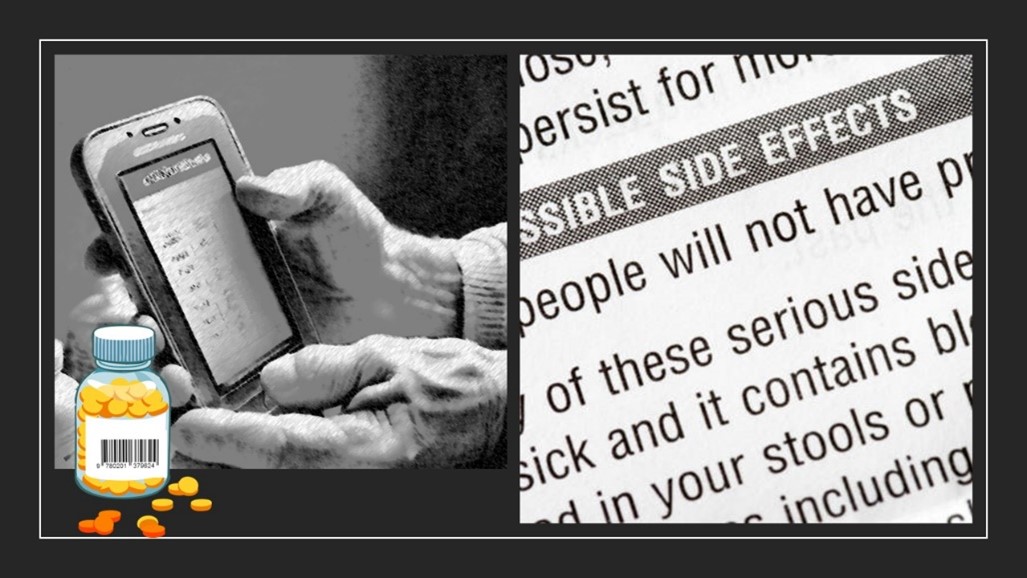
AXIA ARTICLE
March 2024
Revolutionizing Access to Drug Information: the Case for e-Labeling
In today’s fast-paced digital world, where information is readily accessible at a patient’s fingertips, why should accessing critical information about their medications be any different? Imagine a world where a patient can effortlessly access user-friendly, patient-centered information about prescription drugs with just a tap on their smartphone. This vision is not only possible but necessary for ensuring patient safety and empowerment in healthcare.
The current system of paper leaflets with tiny print and overwhelming jargon is outdated and ineffective. Let’s face it: not many patients are likely to meticulously read through every line of those leaflets. And even if they do attempt to navigate through the dense paragraphs, finding crucial details like side effects, precautions, and dosage information can feel like searching for a needle in a haystack.
“Access to vital drug information shouldn’t feel like searching for a needle in a haystack. It’s time to revolutionize the way we empower patients in healthcare.”
Imagine individuals receiving their medication bottles adorned with clear, concise information presented in a user-friendly format. This is where the concept of digitally connected labels comes into play. By leveraging modern technology—such as QR codes, Near Field Communication (NFC) tags, or Radio Frequency Identification (RFID) tags—and embedding them into drug packaging labels, patients could easily access comprehensive drug information. This valuable resource is readily accessible anytime, anywhere, ensuring individuals have the information they need at their fingertips.
Not only does this revolutionize the way patients access information about their medications, but it also enhances patient safety and understanding. With digitally connected labels, patients can quickly and easily access vital information such as dosage instructions, potential side effects, drug interactions, and precautions, empowering patients to make informed decisions about their health.

Furthermore, digitally connected labels have the potential to improve medication adherence rates. By providing patients with easy access to user-friendly information, they are more likely to understand and adhere to their prescribed treatment regimens, leading to better health outcomes and reduced healthcare costs in the long run.
However, the advantages of digitally connected labels are not limited to patients. Healthcare providers also stand to gain significantly. With access to real-time data on medication usage and adherence, providers can monitor their patient’s progress more effectively and intervene, when necessary, ultimately enhancing the quality of care and reducing healthcare costs.
In conclusion, the need for digital drug labels is clear. It’s time to embrace technology and revolutionize the way in which patients and healthcare providers access and understand vital drug information. By making drug information more accessible, user-friendly, and patient-centered, we can empower patients, improve medication adherence, and ultimately save lives. Let’s make this vision a reality for a safer and healthier future.

Swaminathan “Swami” Subramanian is the director of business development at the Axia Institute, where he cultivates corporate partnerships and supports research efforts, innovation, and the growth of the institute’s research portfolio. Swami is leading the Patient-Centric Drug Information Distribution Program with drug manufacturers, distributors, pharmacies, and solution providers and can be reached at sswami@msu.edu.
Want to become part of the e-Leaflet Consortium?
Where industry sees a challenge, we see opportunity. The Axia Institute partners with organizations and corporations worldwide to address the grand challenges that keep leaders and executives awake at night.
We collaborate to develop novel solutions that are getting the attention of industry leaders, government agencies and global organizations alike.
Learn about Joining Axia today.
Partnerships:
Collaborating for Success
Bridging the gap from theory to real-world application.
Education:
Developing Your Skills
Graduate studies, certificate programs and seminars in value chain creation and optimization.
Contact:
The Axia Institute
Have questions? Learn more about how you can get involved with The Axia Institute.
